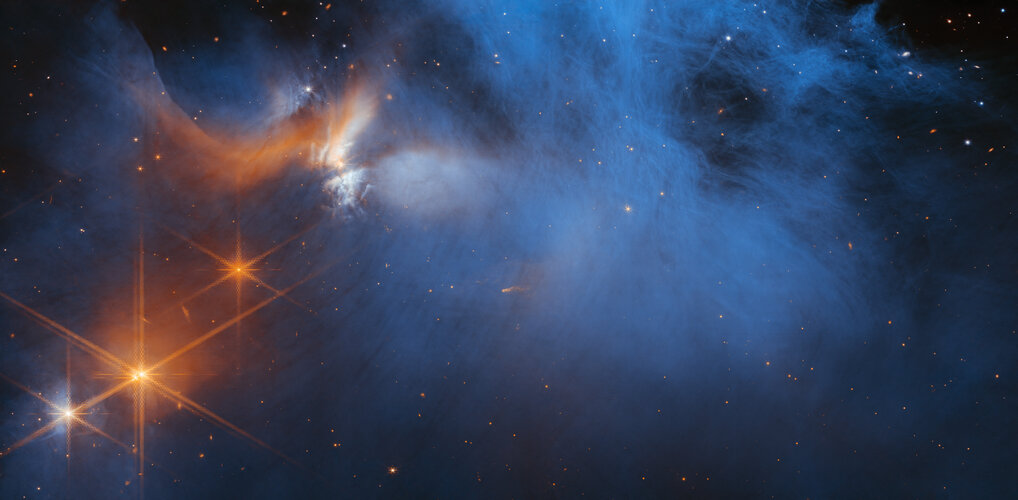If you want to build a habitable planet, ices are a vital ingredient as they are the main carriers of several key light elements — namely carbon, hydrogen, oxygen, nitrogen, and sulphur (referred to collectively as CHONS). These elements are important ingredients in both planetary atmospheres and molecules like sugars, alcohols, and simple amino acids. In our Solar System, it is thought they were delivered to Earth’s surface by impacts with icy comets or asteroids. Furthermore, astronomers believe such ices were most likely already present in the dark cloud of cold dust and gas that would eventually collapse to make the Solar System. In these regions of space, icy dust grains provide a unique setting for atoms and molecules to meet, which can trigger chemical reactions that form very common substances like water. Detailed laboratory studies have further shown that some simple prebiotic molecules can form under these icy conditions.
Now an in-depth inventory of the deepest, coldest ices measured to date in a molecular cloud [1] has been announced by an international team of astronomers using the NASA/ESA/CSA James Webb Space Telescope. In addition to simple ices like water, the team was able to identify frozen forms of a wide range of molecules, from carbon dioxide, ammonia, and methane, to the simplest complex organic molecule methanol. This is the most comprehensive census to date of the icy ingredients available to make future generations of stars and planets, before they are heated during the formation of young stars. These icy grains grow in size as they are funnelled into the protoplanetary discs of gas and dust around these young stars, essentially allowing astronomers to study all the potential icy molecules that will be incorporated into future exoplanets.
“Our results provide insights into the initial, dark chemistry stage of the formation of ice on the interstellar dust grains that will grow into the centimetre-sized pebbles from which planets form in discs,” said Melissa McClure, an astronomer at Leiden Observatory who is the principal investigator of the observing program and lead author of the paper describing this result. “These observations open a new window on the formation pathways for the simple and complex molecules that are needed to make the building blocks of life.”
In addition to the identified molecules, the team found evidence for prebiotic molecules more complex than methanol in these dense cloud ices, and, although they didn't definitively attribute these signals to specific molecules, this proves for the first time that complex molecules form in the icy depths of molecular clouds before stars are born.
“Our identification of complex organic molecules, like methanol and potentially ethanol, also suggests that the many star and planet systems developing in this particular cloud will inherit molecules in a fairly advanced chemical state,” added Will Rocha, an astronomer at Leiden Observatory who contributed to this discovery. “This could mean that the presence of prebiotic molecules in planetary systems is a common result of star formation, rather than a unique feature of our own Solar System.”



